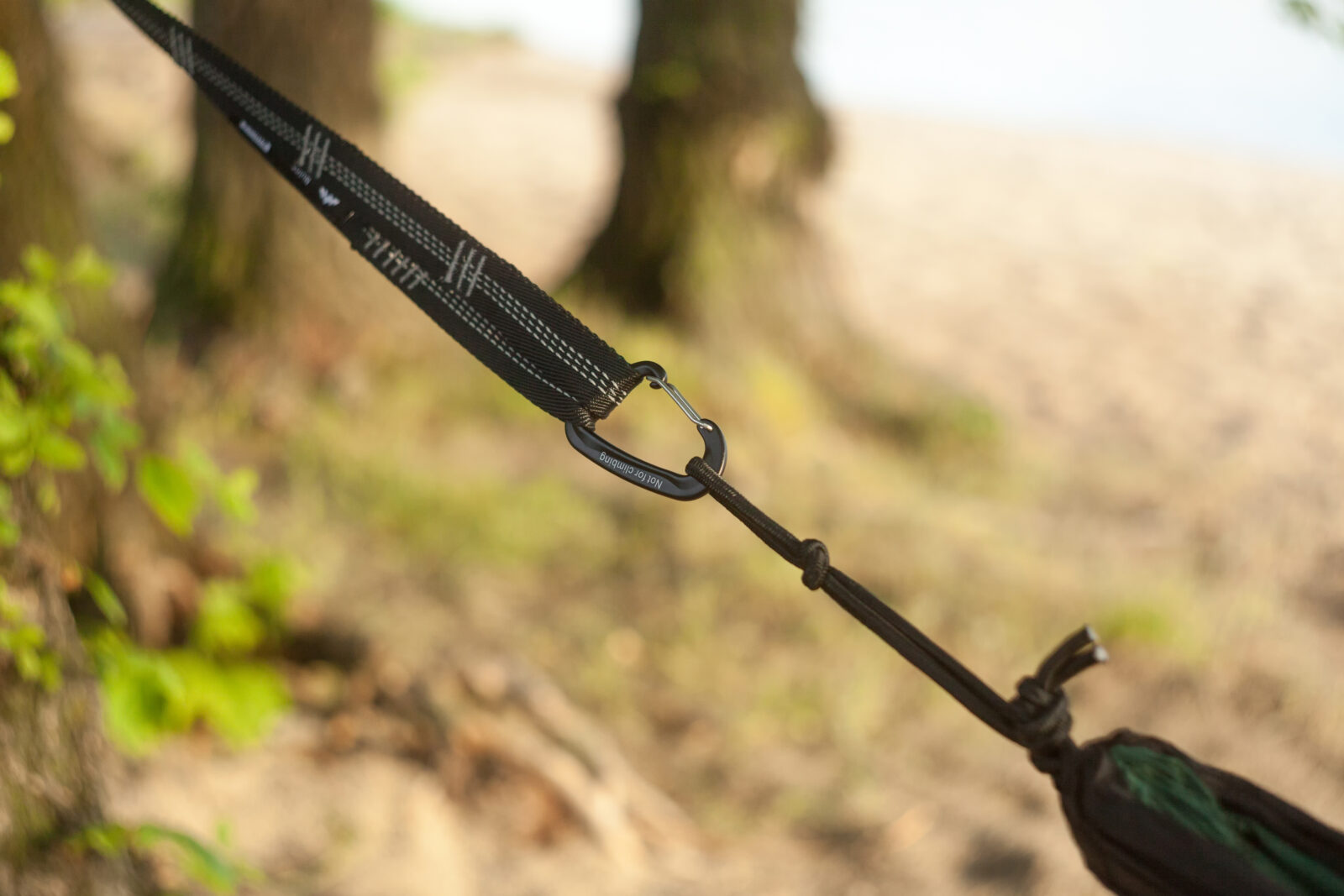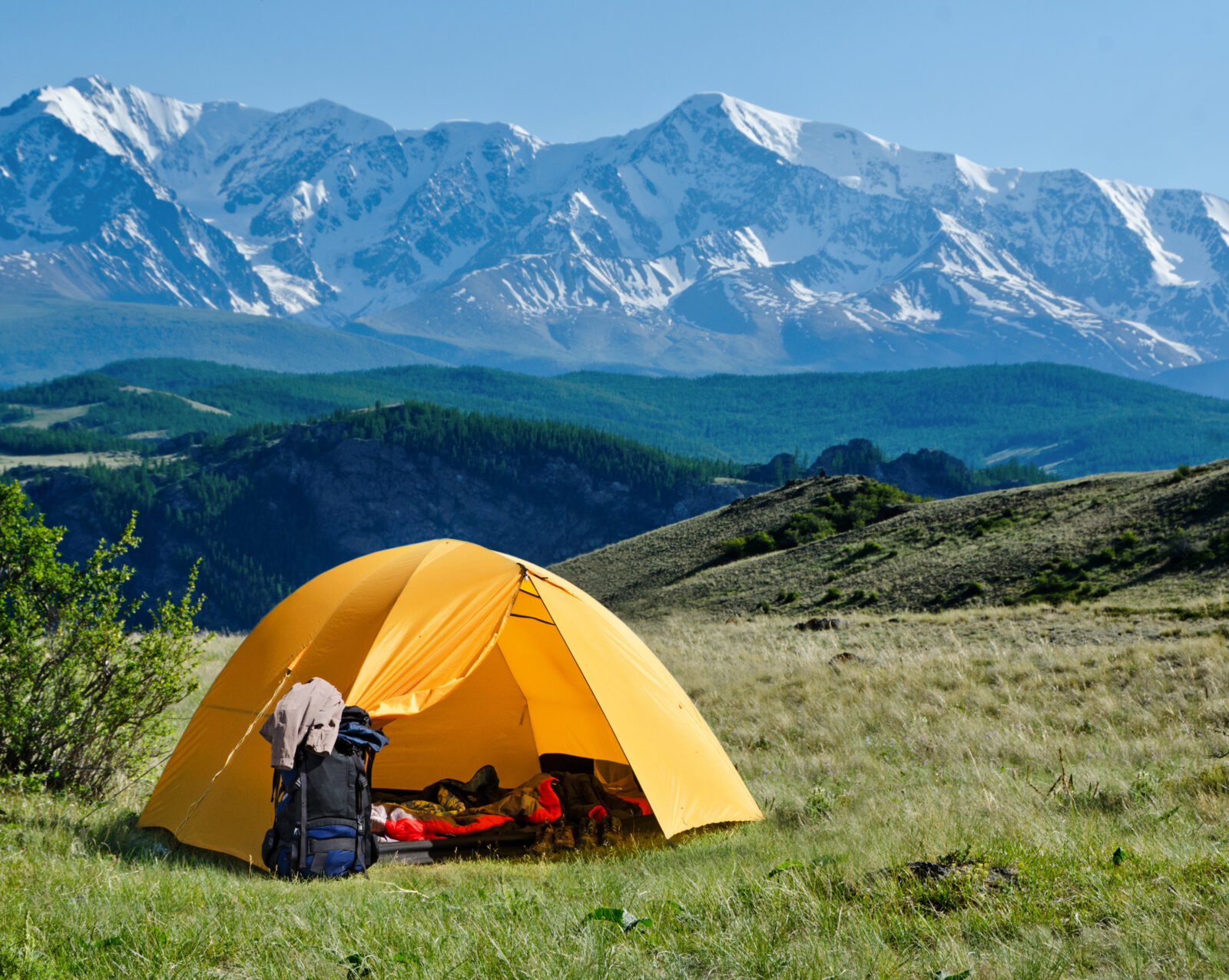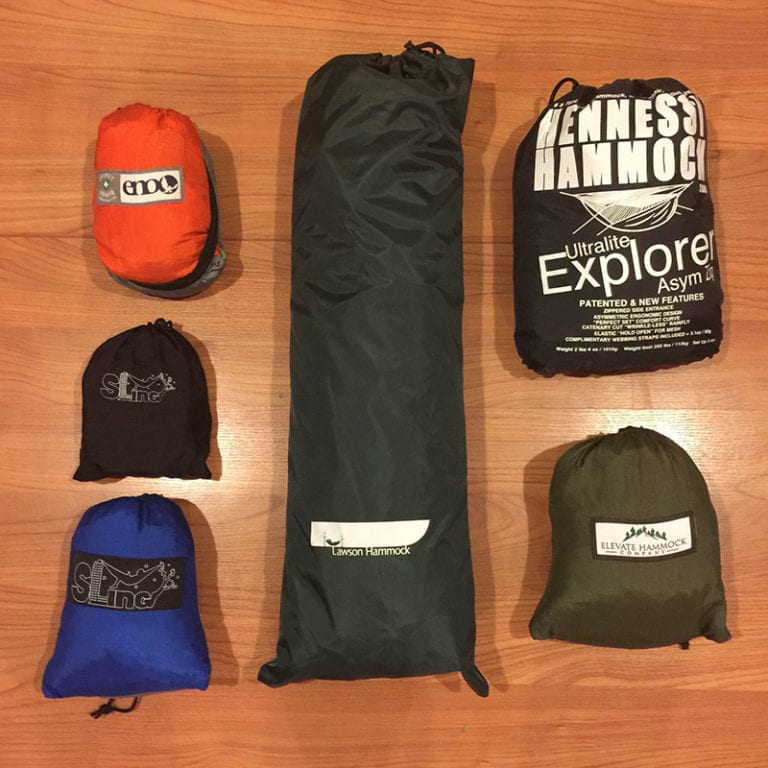Tents and hammocks are both excellent options for making the most of your camping experience.
But, which shelter is most appropriate for your upcoming trip?
To help you decide between a tent and a hammock on your adventures, we’ve put together this guide that compares and contrasts these two shelter options. That way, you know which is best for your needs.
Although comfort and ease of set up are fairly equal among tents and hammocks, when it comes to price and portability, hammocks rule supreme. At the same time, tents provide more protection from the elements, are compatible with a wider range of accessories, and are much more versatile in different environments.
TL:DR
If you need an ultralight, yet affordable set up or you like sleeping between 2 trees, a hammock is a solid choice. Otherwise, opt for a tent, instead.
Page Contents
What's a camping tent?
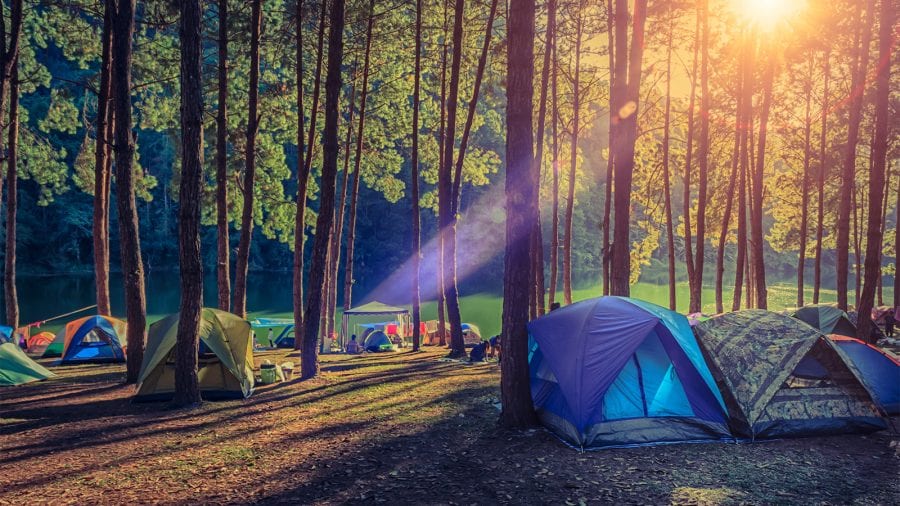
Tents are perhaps the most common camping shelters out there as they provide a reasonably comfortable and functional living space in nearly any outdoor environment. In fact, tents have been around for millennia, serving as a movable shelter for nomadic peoples throughout the last 40,000 years.
Modern camping tents come in a wide range of different sizes, such as two, four, and six-person models. You can find tents in a number of shapes, including tunnel tents and geodesic tents for mountaineering, the more traditional half dome models for backpacking, and cabin tents for car camping.
Tents are best used whenever you want a comfortable, spacious place to sleep that offers excellent protection from the elements all year long.
What's a camping hammock?
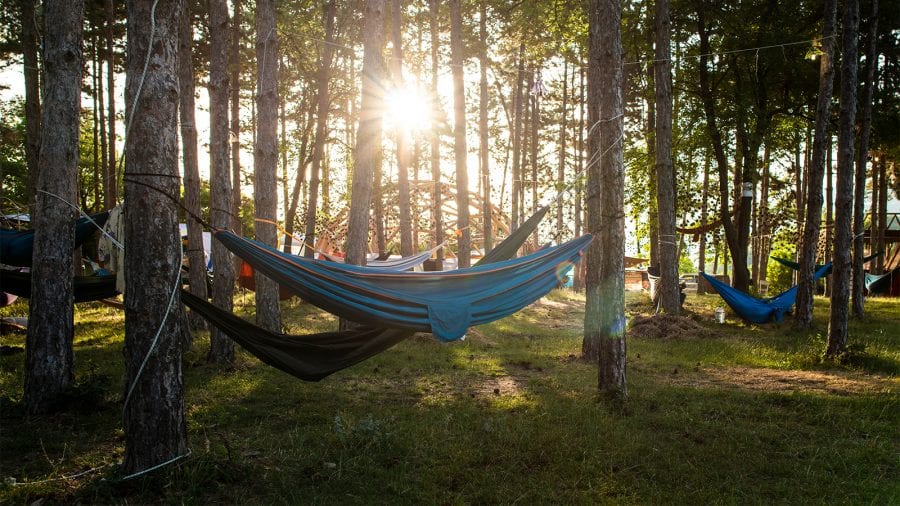
Hammocks are a traditional type of outdoor bed made from a large piece of durable fabric that’s suspended between two trees.
They have been popular among humans for thousands of years, having likely been invented by the Mayans in Central America, particularly around the Yucatan Peninsula. Hammocks were also a mainstay of ship living in years past as they allowed large numbers of the crew to sleep in small quarters by making use of vertical space inside the ship’s cabins.
There are a few different types of hammocks out there, but the two main types used for camping are single hammocks for solo campers and double hammocks for couples.
Regardless of which type you choose, though, hammocks are best used for three-season camping trips in forested environments.
Price comparison
Price is always an important consideration when buying camping gear and your shelter is no exception. Indeed, whether you opt for a hammock or a tent, your shelter is likely to be one of the most expensive pieces of gear you have to buy.
Although prices vary widely based on brand and specific features, most 2 person tents for backpacking cost between $150 and $400.
If you’re camping with a tent, though, you’ll also need a sleeping pad, so you’ll need to factor in an additional $50 to $200 for this extra piece of gear.
Meanwhile, most hammocks will set you back just $50 to $200, plus about $80 to $100 for accessories, like hammock straps and tarps.
Winner : Hammock because even a complete set up (tarp and straps included) is unlikely to cost more than $130 to $300. Alternatively a basic tent and a sleeping pad could easily rack up a $200 to $600 bill.
Ease of set up
No one wants to spend hours setting up their campsite at the end of a long day of hiking, so it’s imperative that your shelter is as easy to pitch as possible.
Tents have a notorious reputation for being difficult to set up for new campers due to all the poles and stakes involved, though most people find that the pitching process becomes fairly simple with some practice.
On the other hand, a hammock generally doesn’t take more than a few minutes to set up, but only if you happen to find a few perfectly spaced trees.
When you add in the extra time required to pitch a hammock tarp and bug net, though, you’ll likely find that pitching a hammock takes just as long as setting up a tent.
Winner : It’s a tie because it’s impossible to say that all tents are always easier to set up than tarps, or vice versa. In reality, with practice and experience, both tents and hammocks can be pitched in just a few minutes.
Comfort levels
Getting a good night’s sleep is important if you want to make the most of your time outside, so being comfortable as you sleep is critical.
In general, most campers find that sleeping in a tent is more comfortable because it’s more similar to sleeping in your bed at home. However, so long as you have enough space inside your tent at night, your sleeping comfort is more a function of the quality of your sleeping pad than anything inherent in the tent’s design.
Alternatively, hammock sleeping is one of those things that people either love or hate. While some people find that they sleep way better when suspended in between two trees, others wake up feeling a little stiff and uncomfortable in the morning.
Winner : Tent because the vast majority of people can find a way to be comfortable in a tent while hammocks just aren’t for everyone.
Safety and protection
Although camping is generally quite safe for folks who have the right gear and experience, there are a handful of things that could affect your ability to get a good night’s sleep, such as bugs, animals, and foul weather.
On their own, hammocks don’t do much to protect you from the elements, bugs, or animals as they have open-top designs that offer minimal shelter from the outdoors. However, when paired with a bug net and a tarp, most hammocks provide a decent amount of protection from the bugs and moderate rainfall.
With a tent, however, you generally get excellent bug and weather protection, particularly in heavy winds. While no tent or hammock is able to protect you from bears, you’ll generally find that rodents and other little forest critters have a hard time sneaking into a tent at night.
Winner : Tent because all tents are designed to protect you from the wind, rain, and bugs without the need to purchase a separate rainfly or bug net. Moreover, tents perform better in the wind than their hammock counterparts.
Packability and portability
Whether you plan to car camp or backpack, having a shelter that’s packable and portable is important.
Most hammocks that are designed for camping tend to pack down relatively small, which is a great advantage for lightweight backpackers heading out on a trip to, say, the backcountry of Yosemite National Park.
At the same time, while you can find very lightweight and packable tents, these are often the exception rather than the rule. Indeed, for solo camping, a two-person tent is almost always going to be heavier and bulkier than a hammock.
Do keep in mind, though, that if you’re planning to camp in a group, bringing a single four-person tent rather than four hammocks is likely the better choice in terms of weight savings and portability.
Winner : Hammock because a hammock is almost always going to be lighter and packable than a one or two-person tent.
Extra accessories
Depending on your personal camping style, you may find that you like to spruce up your shelter with various trinkets and other pieces of gear that make things just a bit more comfortable at night.
For example, in a tent, you can add string lights for illumination, overhead gear lofts for organization, and vestibules for additional gear storage.
Some tents also come with internal hooks and drying lines for hanging up wet clothing and lanterns while others have pockets scattered throughout to help you keep track of little bits of gear.
Hammocks, however, are decidedly simple and they rarely come with much more than a bug net, rainfly, and maybe a built-in pocket for storing your headlamp at night.
Winner : Tents because there are so many different models on the market today, each with their own unique features and accessories that help make your camping experience as comfy as possible.
Versatility
Frequent campers often find that they like to adventure in a wide variety of different landscapes and at different times throughout the year.
Since hammocks are naturally limited in use to forests and other areas with reliable tree cover, this can make them less versatile in the long term. For folks who primarily stick to forested camping areas, this may not be a problem, but for those that like to travel to a variety of places, a tent may be the best choice.
Additionally, when it comes to winter camping, hammocks aren’t always very practical. Although you can snuggle up in a hammock with your winter sleeping bag during a January trip to Rocky Mountain National Park, it’s unlikely to be as warm or comfortable as a proper four-season tent.
Moreover, most four-season tents are better able to withstand heavy snow loads than hammocks and their rainflies.
Winner : Tent because tents can be used in nearly any terrain and throughout the year while hammocks are limited to forested areas and 3 season use.
Recommended Reads :
Gaby Pilson
Gaby is a professional mountain guide with a master’s degree in outdoor education. She works primarily in the polar regions as an expedition guide, though she can be found hiking, climbing, skiing, sailing, or paddling in some of the world’s most amazing places when not at work.
